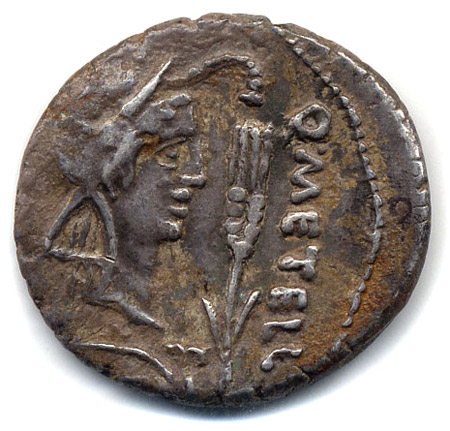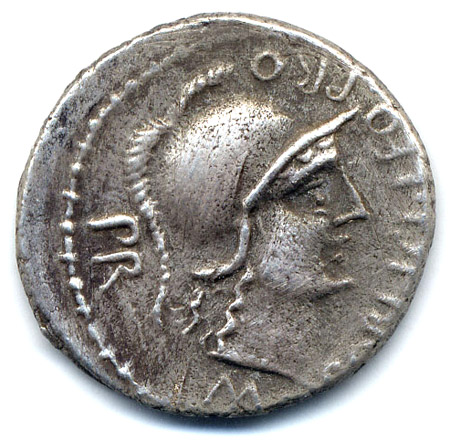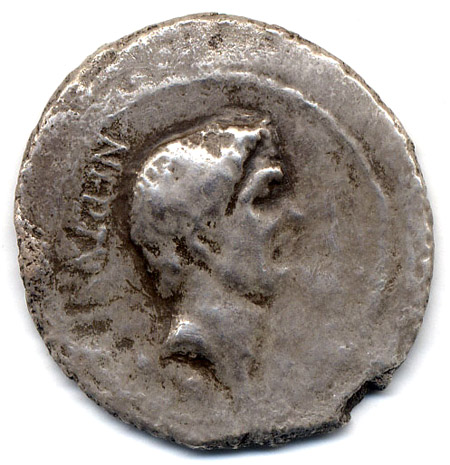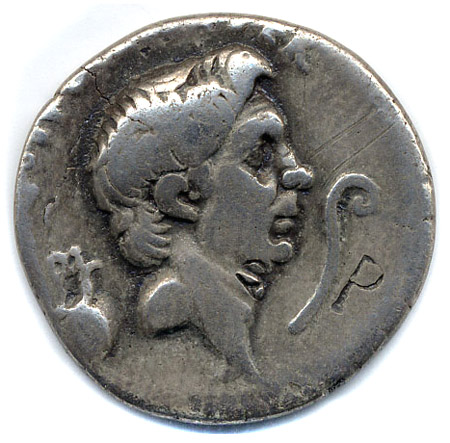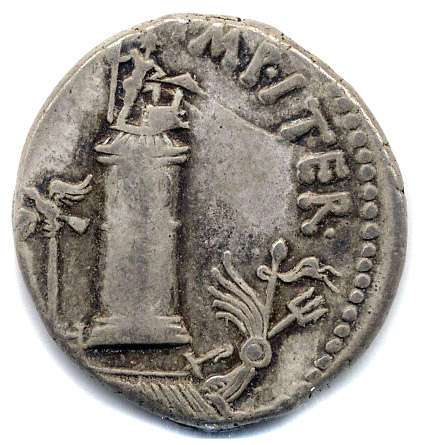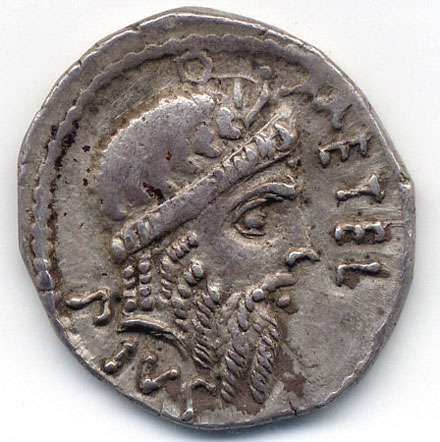Continuing the War: Opposition to Caesar after the Death of Pompey
The death of Pompey in 48 BC did not mean the end of opposition to Caesar. Many continued to campaign for the libertas of the Republic. While the eventual success of Octavian meant that these opposing factions are often displayed in a negative light, coins provide the historian with a check to the literary accounts.
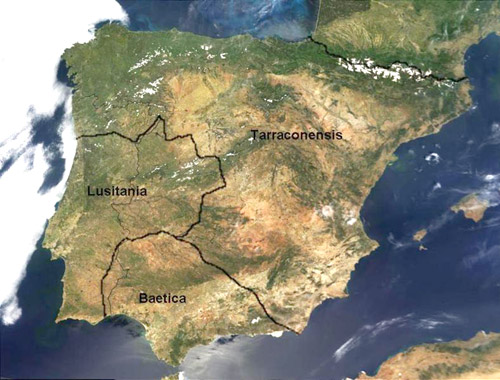
Those who had supported Pompey in Africa remained in that area, and their coins provide an indication of their aims and policies (RRC 459/1, 460/1-4, 461/1, 462/1-2). Q. Metellus Scipio, the father-in-law of Pompey, released coins reflecting his familial history, the hope of Victory and his location in Africa. RRC 461/1 depicts the head of Africa wearing an elephant skin on the obverse, and on the reverse, Hercules. The selection of coin types reflecting general themes rather than any reference to Pompey the Great demonstrates that those in Africa were not a Pro-Pompeian party (Pompeiani as labelled by the Caesarians), but a faction that opposed Caesar and defended the res publica. Pompey was merely one of their members (Welch 2002).
After the battle of Thapsus, the struggle fell to Pompey's sons. The use of Pompey's memory changed dramatically. The elder son Gnaeus Pompeius took up the Pompeian cause in Spain, and his coins reflect the special relationship of the Spanish cities to the Pompeian soldiers, and perhaps also Hispania's support for the Pompeian cause. A series of coins (RRC 469/1, 470/1, 471/1) were struck showing a personification of Hispania (Spain) greeting Roman soldiers. One example of this series (RRC 469/1) shows Hispania holding two spears in her left hand and giving a palm branch to a soldier with her right hand; the soldier is standing on the prow of a ship. Gnaeus also introduced to the obverse of his coins the image of his father, Pompey the Great. (RRC 470)
The death of Gnaeus resulted in the Pompeian cause being taken up by Sextus Pompey, Gnaeus' younger brother.The imagery and memory of Pompey the Great was taken to new levels. While Octavian's claim to be the pious son of Caesar is well known, Sextus also claimed to be the pious son of Pompey. A series of coins (RRC 477/1-3) were released in 45/44 BC showing Pompey on the obverse and the image of Pietas on the reverse. Sextus was able to place Pompey's image on coinage before Octavian could; Caesar was assassinated in 44 BC, just after Sextus began emphasising his devotion to his father. While Octavian claimed descent from Caesar, and thus the favour of Venus, Sextus claimed to have inherited the favour of Neptune from Pompey. Many of Sextus' coins therefore have an emphasis on Neptune or the sea, and on RRC 483/2 the face of Neptune is replaced by the face of Pompey; the dead general and the god are aligned. Sextus' emphasis on pietas towards his father is also seen on RRC 511/3a, which displays on the obverse the head of Pompey and on the reverse Neptune (with the head of Pompey?) between the Catanaean brothers. According to myth these brothers (named Amphinomos and Anapios) carried their incapacitated parents to safety while Mt. Etna was erupting and threatening Catana. By carrying their parents, the brothers were slowed, but then the lava parted around them, and the family was miraculously saved. Just as Pompey could be aligned to Neptune, the two brothers portrayed on the coin might be aligned to the two sons of Pompey (Zarrow 2003). The coin communicates familial piety.
The naval imagery is also important when one considers Sextus' position as Praefectus Classis et Orae Maritimae (Prefect of the Fleet and Coastlines), a position he had been awarded by senatorial decree. Those coins with a naval theme (RRC 511/1-3, RRC 511/4) reflected his position and naval supremacy.

